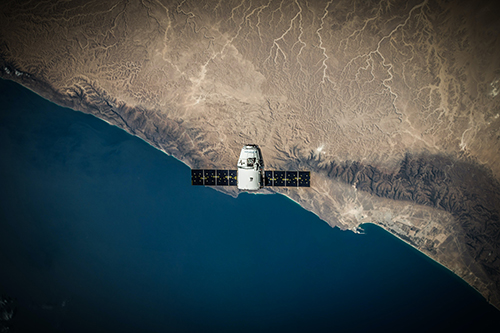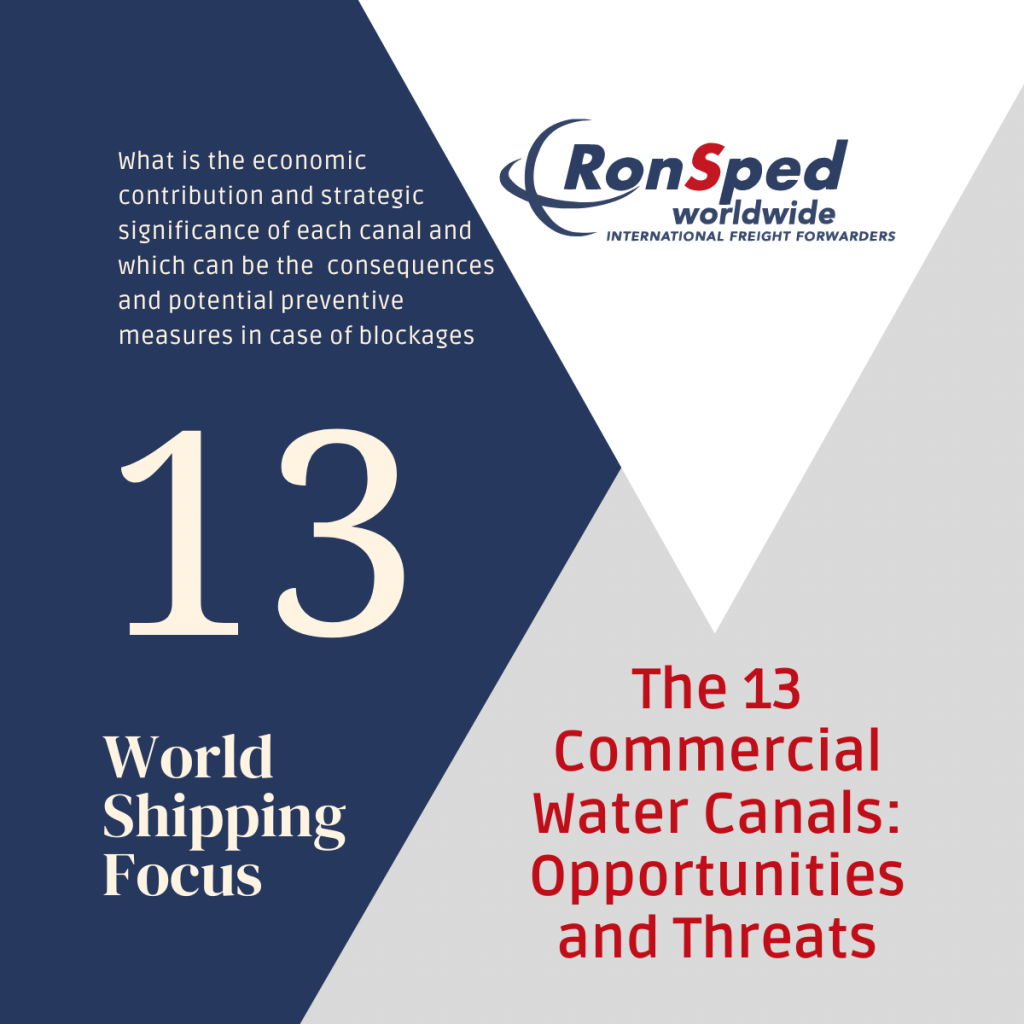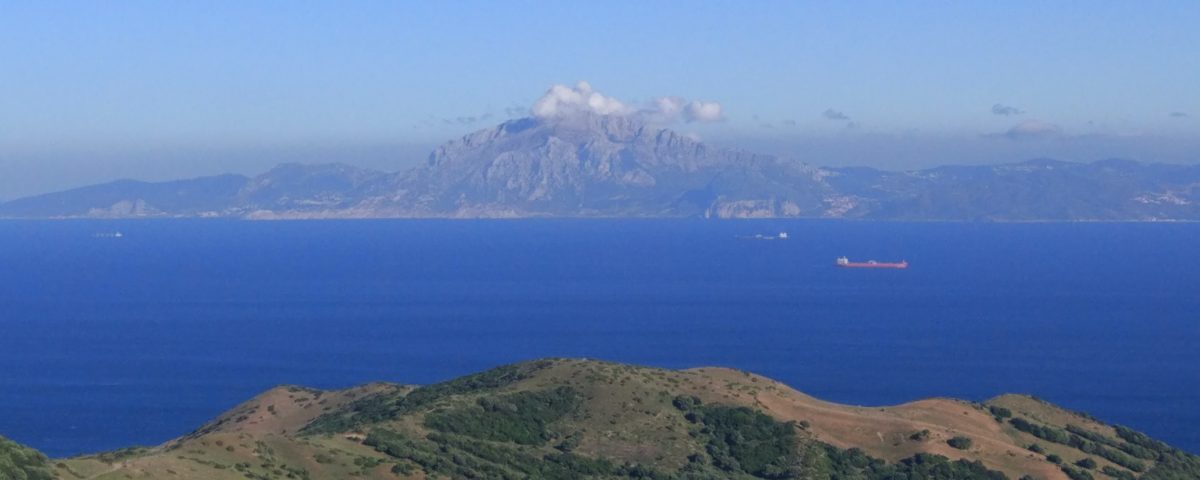
The Evolution and Future of Space Logistics: Unlocking the Potential of Outer Space
24 Luglio 2023
Decarbonizing Transports: A Global Imperative
28 Agosto 2023A recent study conducted by Duke University examines the logistical and economic consequences of blockages in the world’s most critical maritime passageways, through which nearly all global trade passes. Among them, the Strait of Malacca stands out as the most important.
The canals include the Panama Canal, Strait of Gibraltar, English Channel, Strait of Denmark, Bosporus Strait, Suez Canal, Bab el Mandeb Strait, Strait of Hormuz, Strait of Malacca, Lombok-Makassar Strait, Ombai Strait, South China Sea, and East China Sea. These narrow passages facilitate 80 percent of cargo volume and 70 percent of the value of goods and raw materials traded worldwide. The potential blockage of these waterways raises questions about the economic cost and logistical impact.
The role of each canal
Professor Lincoln Pratson, an energy and environment economist at Duke University, has analyzed the economic contribution and strategic significance of each canal to understand the consequences and potential preventive measures in case of blockages. His model examines 217 countries, 13 canals, and 11 possible chokepoint scenarios.
The study’s primary finding is that many of these canals can be circumvented in case of blockage. The Panama Canal, Suez Canal, and Strait of Malacca can be avoided if necessary. However, a blockade of one chokepoint could lead to the diversion of ships to other bottlenecks, causing delays and unpredictable cascading effects.
An interesting phenomenon that may result from a widespread logistical “heart attack” is the stimulation of new intermodal transportation combinations. The study notes that it is challenging to calculate the exact delays, congestion, and multiplied bottlenecks’ effects if a strategic waterway such as Singapore, Suez, or Panama is blocked for months. The reshuffling of trade flows could create unforeseeable consequences.
The Ever Given and the Suez Canal
Pratson’s research was prompted by the grounding of Ever Given in the Suez Canal in March 2021. During the six-day blockage, several ships waited in the queue, some circumnavigated Africa, and shipments faced delays, which were eventually absorbed within a few months without significant increases in transportation costs or major supply disruptions. After 150 years from its opening, the world economy still depends a lot on the Suez Canal. Here transits the 30% of the world containers, the 10% of the goods and the 4,4% of the oil. There are two possible rail alternatives to the Suez Canal. The first involves an 11,000-kilometre journey from China to the Atlantic, which takes just 15 days. 60 are needed by ship. But each train has a significantly lower load capacity than that of container ships. The second alternative would be a high-speed line that could allow the Suez Canal to be “by-passed”, starting in the south from the Egyptian port of Ain Sokhna and arriving in the north at El Alamein, on the Mediterranean. A passage of 500 kilometres, for which a few hours of travel would be enough (but to which it would be necessary to add the loading and unloading time of the goods from the ships).
The role of Suez Canal for Italy’s economy
For Italy, the Suez Canal holds great importance as approximately 40% of the nation’s maritime trade transits through this vital waterway. The total value of Italy’s maritime trade passing through the Suez Canal is estimated at 82.8 billion euros, making it a crucial route for the country’s international commerce.
Moreover, Italy has exhibited remarkable connectivity with Egypt via maritime routes, as indicated by the Unctad PLSCI (Port Liner Shipping Connectivity Index) in 2021. Italy was ranked as the most connected country with Egypt in the container shipping sector, outperforming other countries such as Spain, Saudi Arabia, and China. This achievement marks substantial progress for Italy compared to 2006 when China held the leadership position, and Italy was placed fifth.
Currently, Italy stands as Egypt’s top European partner and holds the fifth position worldwide in terms of import-export volumes with Egypt. In 2022, the import-export value between Italy and Egypt reached 6.9 billion euros.
The most impactful blockades
Pratson’s study identifies the most impactful blockades, highlighting that the highest economic damages would occur if the Strait of Malacca or the South China Sea were blocked. These strategic waterways handle goods worth $3.8 trillion and $4 trillion annually, respectively. In comparison, all trade routes without chokepoints handle only $1.9 trillion.
The 13 canals mentioned in the study carry 55% of all traded corn, wheat, rice, and soy. The global community witnessed the implications of such a blockade during the 2022 Ukraine conflict when a longer blockade threatened global grain supply and caused price spikes. For instance, after Russia’s invasion of Ukraine in February, cereal exports from one of Europe’s main granaries resumed only in July.
Based on shipping spot prices in recent years, just adding a day to the delivery of cargo transported by a Suezmax-sized ship (20 meters draft) would increase transportation costs by half a million dollars. With shipping rates having increased several times by the end of the second quarter of 2021, additional shipping costs would approach $2 million per day.
Using the mapping services of Gis, Visual Capital has mapped the bottlenecks of maritime transport by measuring the risk also from a geopolitical point of view. As we know, about 80% of global goods are shipped by sea. The “bottlenecks” that follow are narrow and strategic passages that connect two larger areas to each other.
The primary blocking points are:
- Strait of Malacca: Asia’s primary checkpoint, accounting for 25% of all traded goods and a third of all seaborne oil
- Strait of Gibraltar
- Suez Canal
- Turkish Straits
- Cape of Good Hope
- Strait of Hormuz: 30% of all oil traded on the world’s oceans passes through this Strait
- Panama Canal: isn’t subject to the same geopolitical risks as its counterparts in the Middle East.
Despite their practicality, these vital points pose several risks:
- Structural risks : as demonstrated in the Suez Canal blockade in 2021, ships can crash along the bank of a canal if the passage is too narrow, causing traffic jams that can last for days.
- Geopolitical risks : Due to high traffic, choke points are particularly vulnerable to deliberate blockages or disruptions during times of political turmoil.

The Role of Alternative Routes and Infrastructure Development
Given the vulnerability of these chokepoints, several countries are exploring alternative routes and infrastructure development to reduce their reliance on these critical passages.
The initiative most significantly affecting global maritime transportation is China’s Belt and Road Initiative (BRI), launched in 2013. The BRI aims to establish a vast network of railways connecting China to Southeast Asia, Central Asia, Pakistan, and Europe. It includes main rail lines connecting China with Europe through Kazakhstan, Russia, and Belarus, as well as lines linking Xinjiang to Turkey and Mongolia to Russia. These rail connections are intended to decrease reliance on maritime trade routes and provide China with greater strategic control over land-based trade.
Thailand is also working on a project to create two ports on either side of one of its narrowest regions, connected by a railway. This would facilitate the transit of goods between the Gulf of Thailand and the Andaman Sea, providing an alternative to the congested and hazardous Malacca Strait near Singapore.
The Arctic maritime route is gaining importance due to global warming, promising a shorter journey from Shanghai to Bergen, Norway, in collaboration with Russia. However, the risk of accidents, oil spills, and environmental disasters must be considered.
The Future of Global Maritime Trade
The COVID-19 pandemic, the war in Ukraine, climate change, and geopolitical dynamics have prompted drastic changes in maritime transportation and logistics. Ports have become congested, trade routes have been altered, delays have increased, and shipping costs have risen. Ship size has also grown, with ever-larger container ships being built to meet the increasing demand for goods.
In Europe, the Genoa port is working on a new offshore breakwater project that will enhance navigational capabilities for large vessels and improve safety by separating commercial flows from passenger ships. The project is expected to make Genoa and the Mediterranean a key hub in global maritime traffic.
The Duke University study, along with these initiatives, reflects the growing awareness of the vulnerabilities in the global maritime trade system. To ensure the smooth flow of goods and reduce risks, countries are diversifying their transportation options and investing in resilient and modern infrastructures. The future of global trade will depend on how well nations adapt to changing dynamics and collaborate to address logistical challenges.
Read the other World Shipping Focus News:
Post 2M. perspectives in container shipping
India as a global hub for logistics and manufacturing
The 2035 ban to endothermic engines in Europe and how it affects Italy’s economy and export
The value of Cosmetic industry in Italy and the export forecast for 2023
The New Wave of Container Ships: Bigger and More Sustainable?
The rise and fall of the new Silk Road
Revolutionizing Storage and Logistics: VLMs and VSWs
The Evolution and Future of Space Logistics: Unlocking the Potential of Outer Space
Sources
https://www.informazionimarittime.com/post/le-13-strettoie-del-traffico-marittimo-globale


